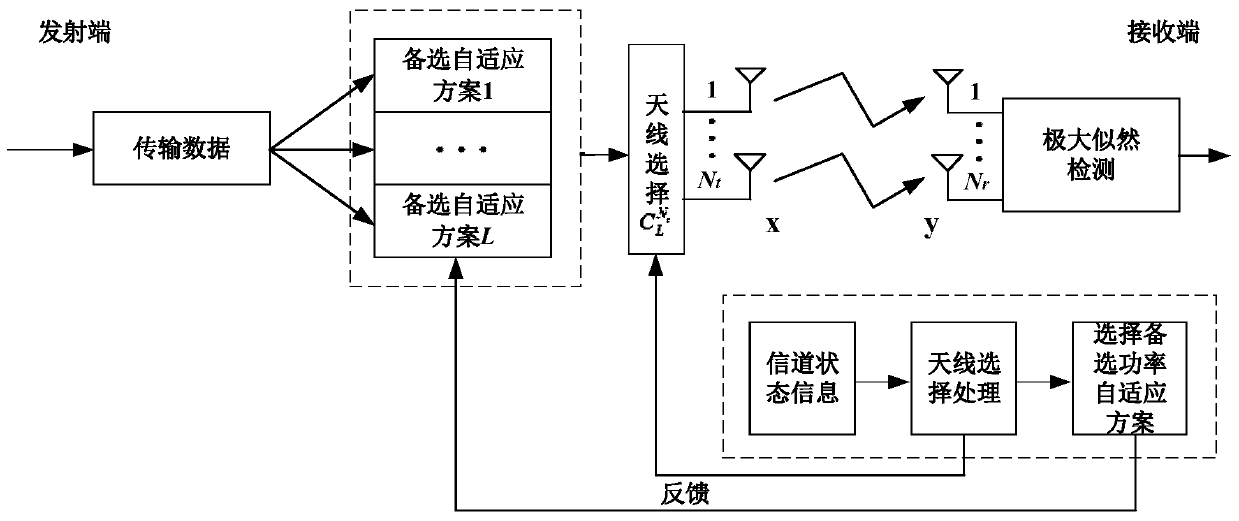An Antenna Selection-Power Adaptive Spatial Modulation Method
An antenna selection and self-adaptation technology, applied in the field of communication, can solve the problems of weak anti-interference ability of MIMO system, increasing the minimum Euclidean distance between constellation points, etc.
- Summary
- Abstract
- Description
- Claims
- Application Information
AI Technical Summary
Problems solved by technology
Method used
Image
Examples
Embodiment Construction
[0051] The specific embodiments of the present invention will be given below in conjunction with the accompanying drawings; it should be noted that the parameters in the embodiments do not affect the generality of the present invention.
[0052] Assume that the information transmission rate of the transmitter is m=3 bits / time, and the number of antennas at the transmitter is N t = 2, the number of antennas at the receiving end N r =1, considering that the modulation mode is 4-QAM, that is, the constellation point set D={-0.7071-0.7071i,-0.7071+0.7071i,0.7071-0.7071i,0.7071+0.7071i}. Alternative power transfer schemes are as follows:
[0053] Φ={diag([p 11 ,p 12 ]),diag([p 21 ,p 22 ]),...,diag([p r1 ,p r2 ])}
[0054] in, p ik >0, here we assume that the initial value is p 11 =1.9,p 12 =0.1, final value p r1 =0.1,p 12 =1.9, The step size Δ=0.1, that is, p i1 =p 11 -(i-1)Δ,p i2 =p 12 +(i-1)Δ.
[0055] Then for each scheme of the candidate power allocation s...
PUM
 Login to View More
Login to View More Abstract
Description
Claims
Application Information
 Login to View More
Login to View More - R&D
- Intellectual Property
- Life Sciences
- Materials
- Tech Scout
- Unparalleled Data Quality
- Higher Quality Content
- 60% Fewer Hallucinations
Browse by: Latest US Patents, China's latest patents, Technical Efficacy Thesaurus, Application Domain, Technology Topic, Popular Technical Reports.
© 2025 PatSnap. All rights reserved.Legal|Privacy policy|Modern Slavery Act Transparency Statement|Sitemap|About US| Contact US: help@patsnap.com



